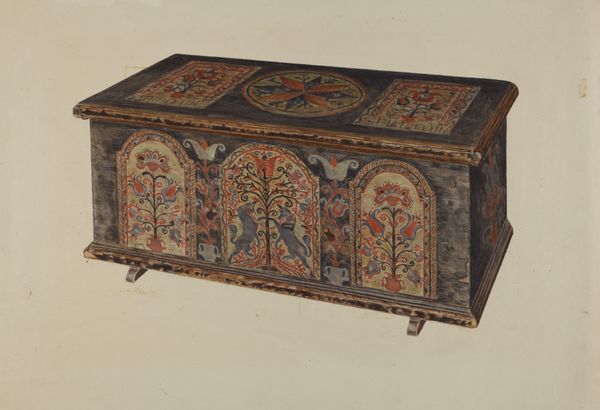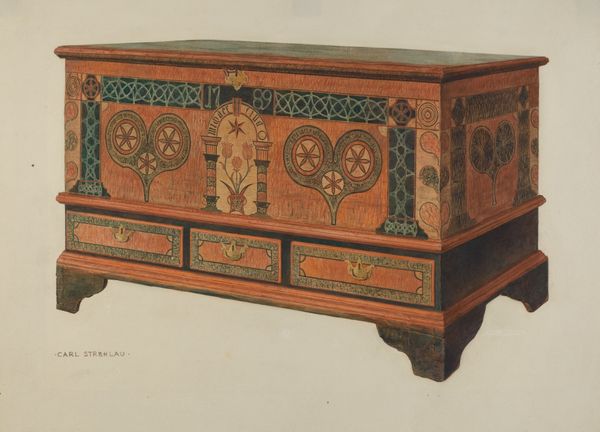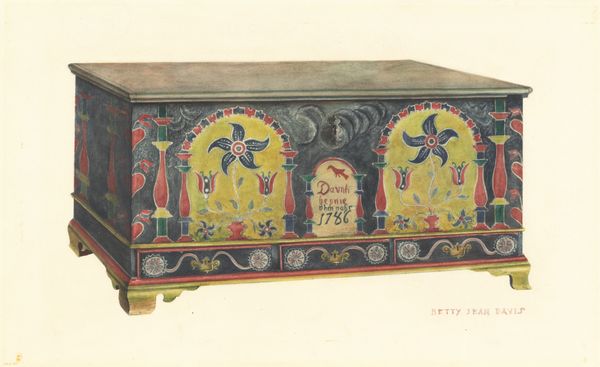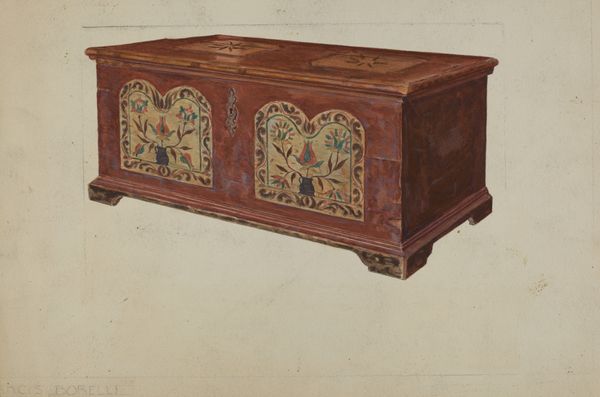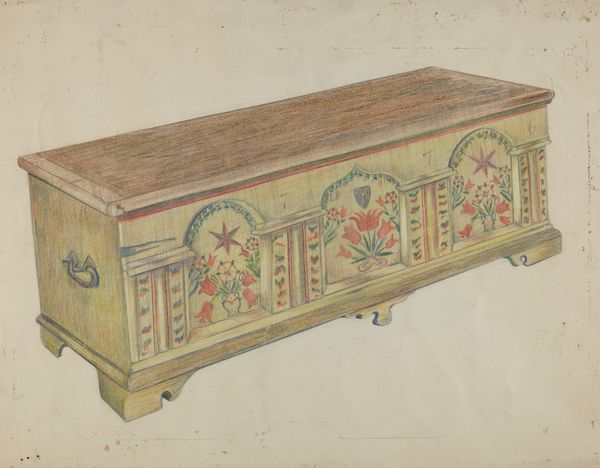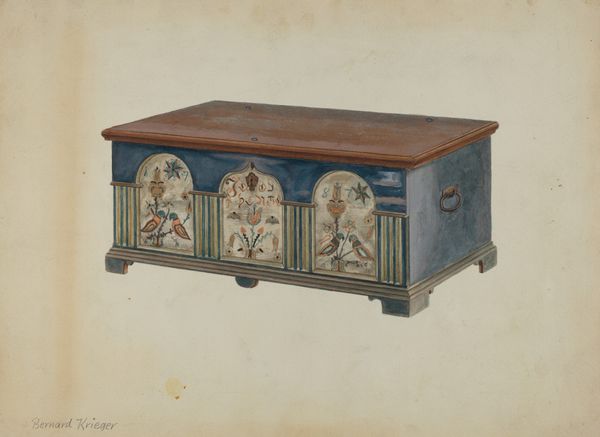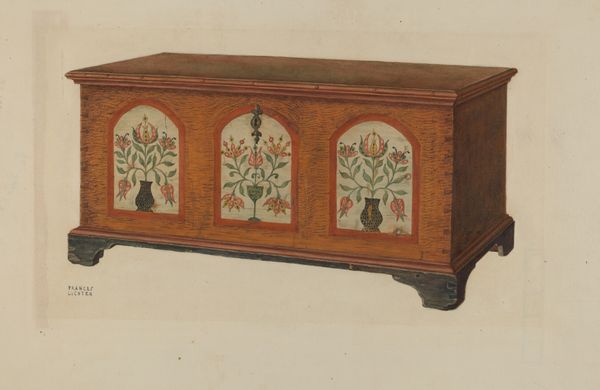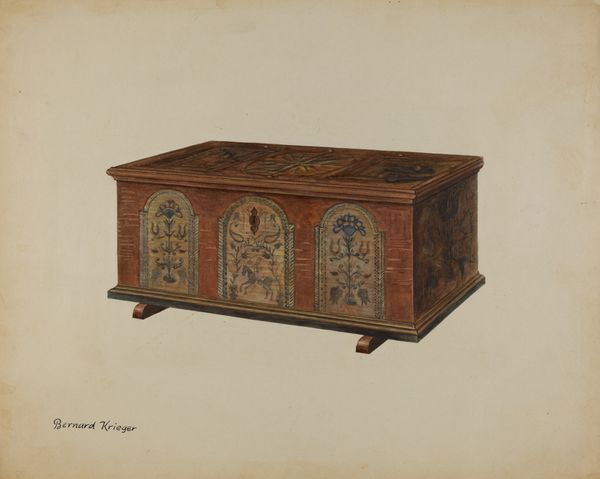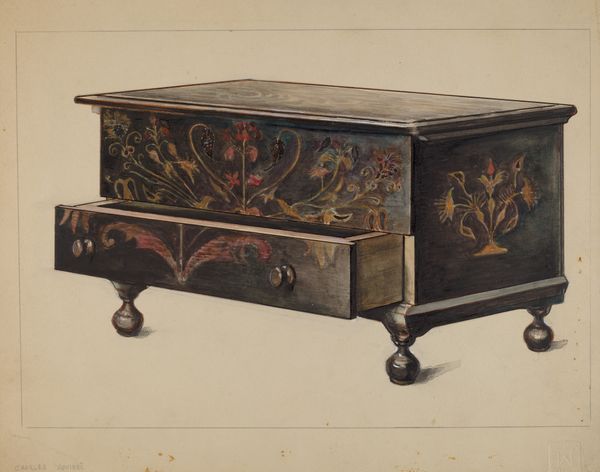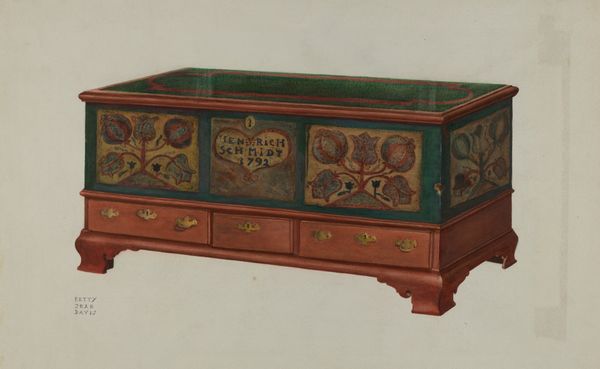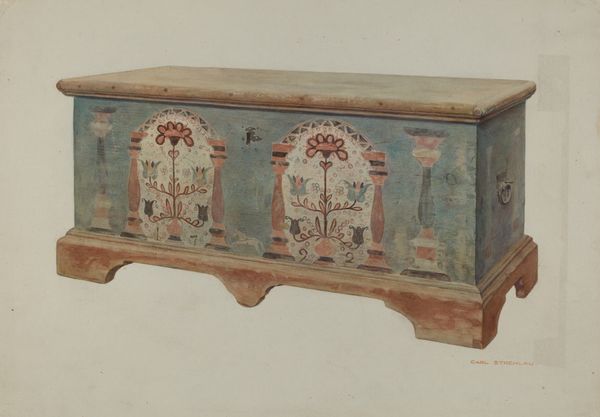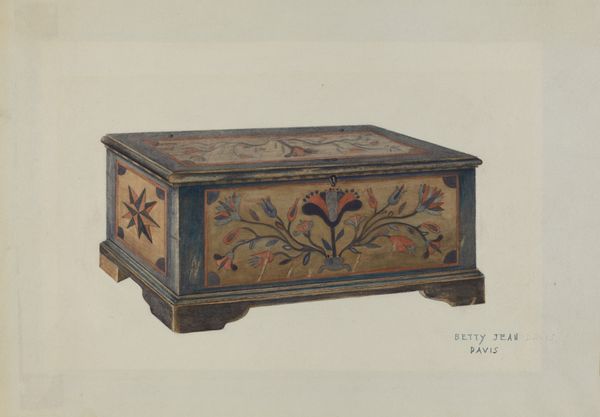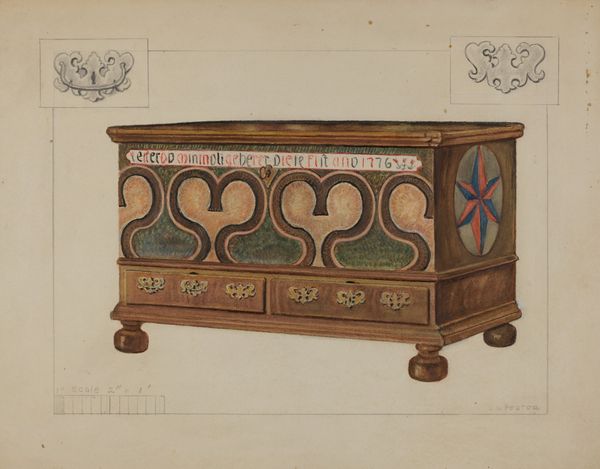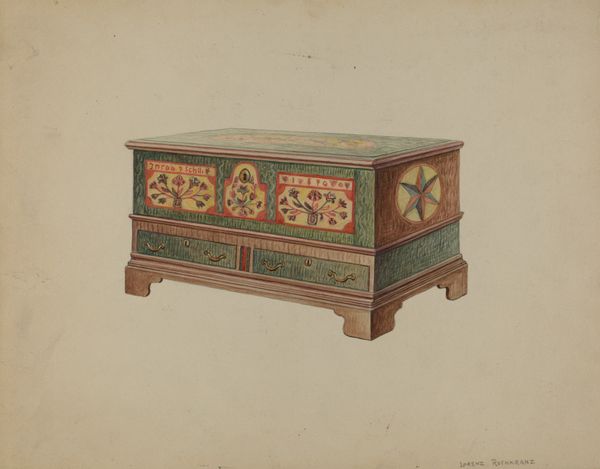
painting, watercolor, wood
#
painting
#
watercolor
#
folk-art
#
wood
#
genre-painting
#
decorative-art
#
watercolor
Dimensions: overall: 27.8 x 41.2 cm (10 15/16 x 16 1/4 in.) Original IAD Object: 25" high; 50" long; 23 1/4" wide
Copyright: National Gallery of Art: CC0 1.0
Curator: This watercolor, rendered around 1938 by Frances Lichten, presents a vividly decorated "Pa. German Painted Chest." What strikes you first about its presentation? Editor: Well, it's undeniably charming, wouldn't you agree? The palette is dark but the painting feels quite warm, inviting. The way Lichten details the composition, though symmetrical, dances just on the edge of becoming disorganized or overwrought, especially given the symmetry of lions around trees motif, but avoids this through strategic use of color and line. Curator: Indeed. Chests of this style and era served a significant function, more than mere storage. They were dowry chests, laden not just with material goods, but symbolic hopes for marital prosperity and societal continuity. These weren’t mass produced—families would engage skilled local artisans who’d bring a personalized cultural visual vernacular into the piece. Editor: Those floral motifs are compelling. Look how the hearts and tulips, especially those fiery oranges and reds, disrupt an otherwise predictable color scheme, becoming not just ornamentation, but focal points in their own right. It really plays into folk art traditions and those very simplified forms. Curator: Precisely. And notice how the inscription band at the center includes the name of the commissioner in this very lively decorative fashion. It is, literally, branded as property but then re-coded through artistic skill as a loving gift, and furthermore, something that also conveys local and cultural identity to neighbors. Editor: I keep returning to the execution, though. It is more than mere representation; the painting becomes a celebration of surface and texture, that even when rendered on paper, simulates wood itself. Curator: Agreed, Lichten invites us to think about that painted chest in many interesting ways, offering insights into the cultural expressions, and gendered and family experiences, that underpinned its creation and use. Editor: Well, considering just how dynamically Lichten presents the forms, motifs and patterns, even at second glance it’s certainly left me thinking more about the relationship between the work’s structure, and the history it carries.
Comments
No comments
Be the first to comment and join the conversation on the ultimate creative platform.
